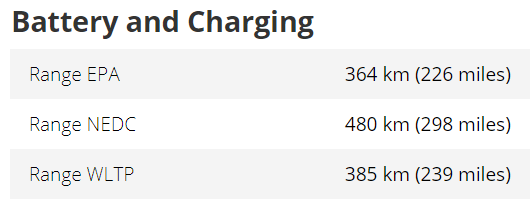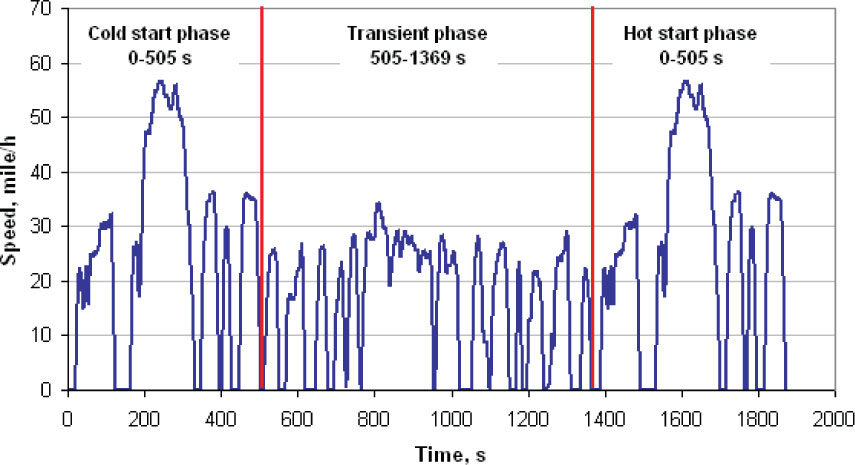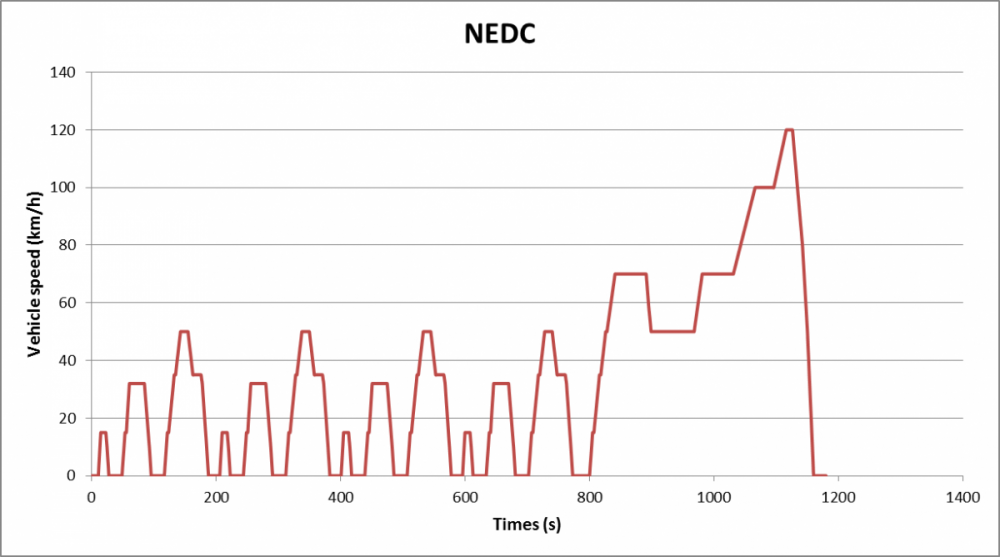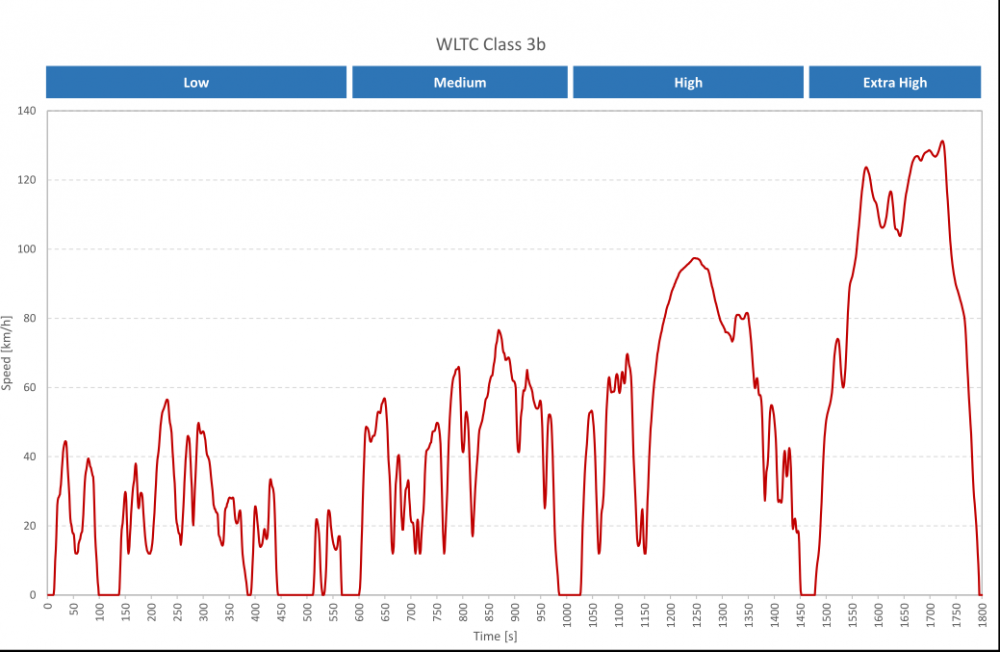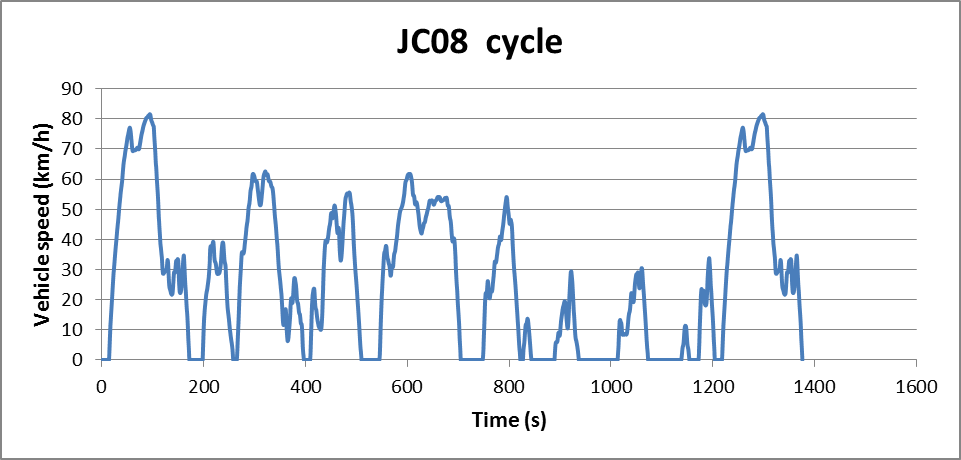Search the Community
Showing results for tags 'wltp'.
-
Preface: When I replied the other Electric Car thread about NEDC and WLTP range for the new 2020 BYD Han EV, it crossed my mind that maybe I should be writing a proper guide for this. In the future when Electric Vehicles (EVs) pick up in Singapore, I believe there will be many people who will search these terms on MCF. Main topic: What is the difference between NEDC, WLTP, EPA, JC08, CATC when we talk about driving range of EVs? Let's say you are looking to buy an EV, or maybe just reading articles on EV, you come across the statement "This car can achieve 480km of electric driving range at NEDC". What does that mean? Or when you search online for an electric vehicle, you come across the following picture: Why are there 3 numbers for Range, and why are they all so different? Just like testing the fuel economy of engines, there are many different kinds of testing procedure around the world to test on electric vehicle driving range. The main 4 currently in 2020 are: EPA, NEDC, WLTP and JC08 (more about the last standard CATC later). Here are quick descriptions for each of them: 1) EPA - stands for Environmental Protection Agency. This is a standard that is based in the United States, usually publishing their range figures in miles rather than kilometers. The EPA testing cycle follows the graph below (correct as at 2020). As you can see, the test is heavily based on city driving; the maximum speed does not even reach 60 miles/hr (97km/h), and a lot of time is spent only up to 40 miles/hr (64km/h). 2) NEDC - stands for New European Driving Cycle. As the name suggests, this is a standard that is based in the European Union, but is used by other countries such as China. Don't be fooled by the name "New", because new meant 1997. This is actually a rather old standard, and is currently in the process of being replaced by the WLTP standard. So very often you will see both numbers in EV catalogues, but this number will likely disappear soon. The NEDC testing cycle follows the graph below (correct as at 2020). Like the EPA testing cycle, you can see a heavy emphasis on city driving below 60km/h. However, the last part allows the test to have some representation of highway driving of up to 120km/h. 3) WLTP - standard for Worldwide Harmonised Light Vehicle Test Procedure. As mentioned earlier, this is meant to replace the old NEDC standard. Many countries in the European Union as well as China have started to transition to this. The WLTP testing cycle follows the graph below (correct as at 2020). Compared to the old NEDC testing cycle, the graph is more non-linear to represent real-world driving styles better. Also, there is more time spent in the last 2 sections at high speeds above 80km/h even up to 130km/h unlike the old NEDC testing cycle. This will help to represent highway driving better, especially in the European Union. Overall, a good upgrade from the current NEDC test. 4) JC08 - stands for Japan Cycle '08. As the name suggests, this is is a standard that is based in Japan, with not much use anywhere else in the world. Unintuitively, this test first started in 2005 even though the last 2 numbers are 08; the number 08 stands for the testing cycle number. The JC08 testing cycle follows the graph below (correct as at 2020). Like the EPA testing cycle, there is a heavy emphasis on city driving below 60km/h. Furthermore, even their "fast" speeds to represent highway driving barely touches 80km/h. Probably a good representation of driving styles in Japan with many small roads. Now that you know the 4 main cycles in 2020, which one is the most accurate? This is a difficult answer because as you can see, all the tests are based on different driving styles. Furthuremore, it also depends on your own driving style just like how an engine car can claim to get 20km/L on the brochure but when you buy it, you only get 15km/L. That being said, many journalists and regular drivers around the world have claimed that the EPA range gives the closest to the actual driving range a person will get. WLTP follows closely to EPA, while JC08 and NEDC electric driving ranges are almost impossible to achieve during regular driving. For those who want a bit more detailed numbers, NEDC to WLTP = NEDC * 0.78 NEDC to EPA = NEDC / 1.43 WLTP to EPA = WLTP / 1.12 Don't forget to change from miles to kilometers if you want to follow metric standard in Singapore! (Note 1:numbers taken from this article, and I have personally found it to be fairly accurate https://insideevs.com/features/343231/heres-how-to-calculate-conflicting-ev-range-test-cycles-epa-wltp-nedc/) (Note 2: I skipped JC08 because only Japan uses it. Japanese cars are mostly sold elsewhere in the world too, so they would come with an accompanying EPA or WLTP number) Lastly, a brief introduction to our last standard, CATC. 5) CATC - stands for China Automotive Testing Cycle. This is China's specific testing cycle meant to replace the WLTP that they are currently using, and is planned to start beginning first half of 2021. There isn't much information available regarding it now, but when it comes up I will update this post to include the driving cycle. So there you have it. Your introductory answers to questions on EV driving cycles EPA, NEDC, WLTP, JC08 and CATC. Please let me know if you would like more things to be added.

